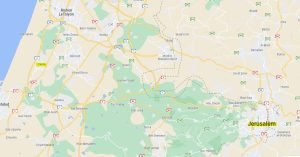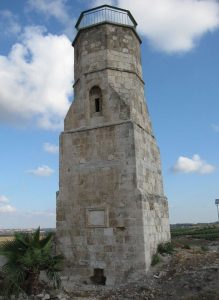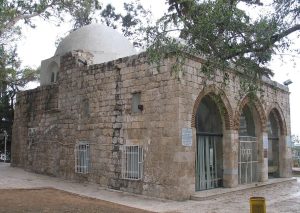The mishnayot of the fifth chapter of Sotah, most of which are presented together on daf 27b, have a recurring phrase: בו ביום, on that day. What day is the Mishnah talking about? We have to go back to Berachot 27-28 to understand the day in question. In the story there we hear how Rabban Gamliel, head of the Sanhedrin in Yavneh, had exercised his authority too harshly upon Rabbi Yehoshua ben Hananiah, one of the most respected Sages. After humiliating him a number of times, there was a rebellion. Rabban Gamliel was deposed from his position as Nasi (head of the Sanhedrin) and after a debate, Rabbi Elazar ben Azarya was put in his place, despite the latter’s great youth. On that historic day many things happened:
“On that day several benches were added to the study hall . . .
It was taught: There is a tradition that tractate Eduyyot was taught that day. And everywhere in the Mishna or in a baraita that they say: On that day, it is referring to that day.” (Berachot 28a)
On that day the bet midrash was open to all, without the strict criteria that Rabban Gamliel had imposed on potential students. In addition, the Gemara tells us that all of Masechet Eduyot was taught. Eduyot is a tractate that has testimony from the rabbis about different laws. Whether or not everything in the tractate was given over on that day, it certainly seems to have been a fertile day in the Bet Midrash, one that was remembered for years to come. Our mishnayot in Sotah relate part of the fruitful if conflicted dialogue that took place on that day. Other places in the Mishnah and the Gemara also relate halachot and aggadot that were recited “on that day.” It was a day for the ages.
Was the Bet Midrash buzzing because the restraining influence of Rabban Gamliel was lessened? Perhaps his quest for unity quelled any kind of dissension and rebellion and there was a need for his powerful personality to take a step back in order for the full creative powers of the rabbis to be unleashed. In any case, our mishnayot reflect many opinions, traditions and arguments. The full story also reflects the willingness of the rabbis to criticize themselves and to accept criticism. Tellingly, it is related in Berachot that Rabban Gamliel stayed in the Bet Midrash that day and took part in all the discussions, despite having lost his position of power.
Where was all this drama happening? In the first home of the Sanhedrin after the Temple was destroyed, Yavneh. Yavneh was the home of the generation of rabbis who had to rebuild after the Great Revolt, the place of Rabban Gamliel and Rabban Yohanan ben Zakkai, as well as (at least intermittently) of their students Rabbi Yehoshua and Rabbi Eliezer ben Hyrcanus and their students’ student, Rabbi Akiva.
Yavnah existed as a small town but it had little or no importance before Rabban Yohanan ben Zakkai, in the famous story told in many versions, asked the Roman general Vespasian for “Yavneh and her scholars.” There are different suggestions why he specifically asked for Yavneh – some scholars say that it actually was a Roman prison camp, albeit for “white-collar” prisoners, and Rabban Yohanan ben Zakkai was sent there against his will. In any case, it was a small town, far from the hotbeds of trouble in Jerusalem, and it was there that Rabban Yohanan hoped to rebuild Judaism without a Temple.

Yavneh and Jerusalem are highlighted
The Sanhedrin followed Rabban Yohanan ben Zakkai to Yavneh and Rabban Gamliel was its leader. Study continued unabated and Rabban Gamliel worked hard to unify the fractious Jewish people. Sectarianism came to an end as Rabbinic Judaism and Christianity both emerged and Rabban Gamliel, sometimes harshly, tried to quell dissenting voices.
Yavneh’s importance does not lie in its physical remains but rather in what transpired there. Here the calendar was determined, and the main rabbinic court sat. People came to Yavneh to ask their halachic questions. They blew shofar in Yavneh on Rosh HaShanah that fell on Shabbat, like they did in the Temple. Yavneh was not a center for a long time but it created a template for rabbinic leadership centers in a post Temple world and for that it gained eternal fame. As one scholar wrote: there was Yavneh before Usha, Zippori and Tverya but there was no Yavneh before Yavneh. Yavneh set the mold for Rabbinic leadership.
Visiting Yavneh today, a nice little town not far from Rehovot, it is hard to see what the fuss is about. The tel has yielded little from the time period of the Tannaim, although there is an impressive Mameluke tower on top, as well as remains of earlier Crusader buildings.

Ori~, Attribution, via Wikimedia Commons
In the town is a grave that is traditionally cited as the grave of Rabban Gamliel, the leader of the Sanhedrin in Rabban Yohanan’s time. The building is clearly a Mameluke one and the Muslims identify the grave as belonging to Abu Hureira, a companion of Muhammed. However, there could be an earlier grave below.

Traditional site of Rabban Gamliel’s grave
Bukvoed, CC BY 3.0 <https://creativecommons.org/licenses/by/3.0>, via Wikimedia Commons
You can visit Yavneh today and see the tel and Rabban Gamliel’s grave. Whether it is his true grave or not, the legacy of Rabban Gamliel and his colleagues, both before and after “that day,” accompanies the Jewish people on our journey.










